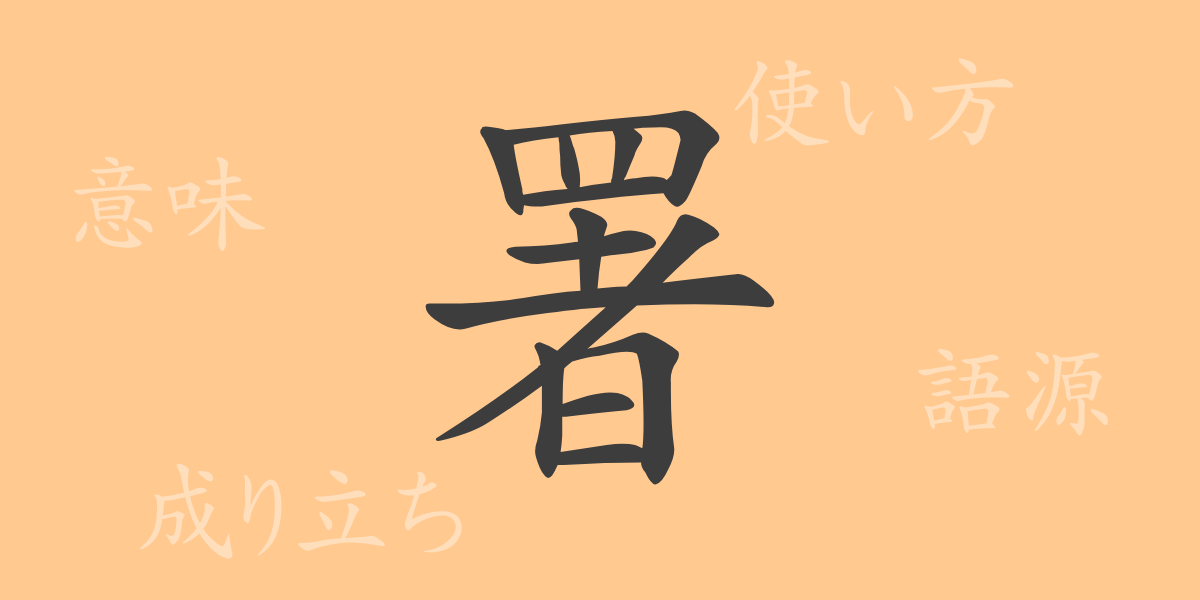Japanese culture and language are imbued with deep history and meaning. The kanji “署(しょ)” is one such character, frequently used in our daily lives. This article delves into the origins, meanings, and uses of “署(しょ)”, as well as various idioms and expressions associated with it, to enhance your understanding of this essential kanji.
署の成り立ち(語源)
According to ancient Chinese records, the kanji “署(しょ)” is composed of “罪(つみ)” (criminal) and “网(あみ)” (net) which was used to restrict the movement of criminals. Originally, it referred to a place where criminals were managed. Over time, the meaning of “署(しょ)” evolved, and today it is used in a broader context.
署の意味と用法
In modern Japanese, “署(しょ)” primarily refers to public institutions or their offices. It is commonly used to denote specific governmental offices such as police stations and tax offices. Additionally, “署(しょ)” can refer to the act of signing one’s name, as seen in the word “署名(しょめい)” (signature).
署の読み方・画数・部首
Understanding “署(しょ)” requires knowledge of its readings and structure.
- 読み方: 音読みで「ショ(しょ)」、訓読みは特にありません。
- 画数: 全13画です。
- 部首: 部首は「网(あみがしら)」です。
署を使った熟語・慣用句・ことわざとその意味
There are many idioms and expressions containing “署(しょ)”, each with its own unique meaning.
- 警察署(けいさつしょ): A local police office responsible for law enforcement.
- 税務署(ぜいむしょ): A local office responsible for tax administration.
- 署名(しょめい): The act of signing one’s name on a document.
- 署長(しょちょう): The head or chief of a public office.
- 署員(しょいん): An employee or staff member of a public office.
These idioms and expressions illustrate the societal roles and functions associated with “署(しょ)”.
署についてのまとめ
The meaning embedded in a single kanji reflects the culture and history of a nation. “署(しょ)” is no exception; its usage and significance have evolved from ancient times to the present, playing a crucial role in contemporary Japanese society. Whether indicating public institutions or personal acts such as signing a document, “署(しょ)” appears in various contexts. Through this article, we hope you gain a deeper understanding of its rich history and applications, and appreciate the broader world of the Japanese language.

























